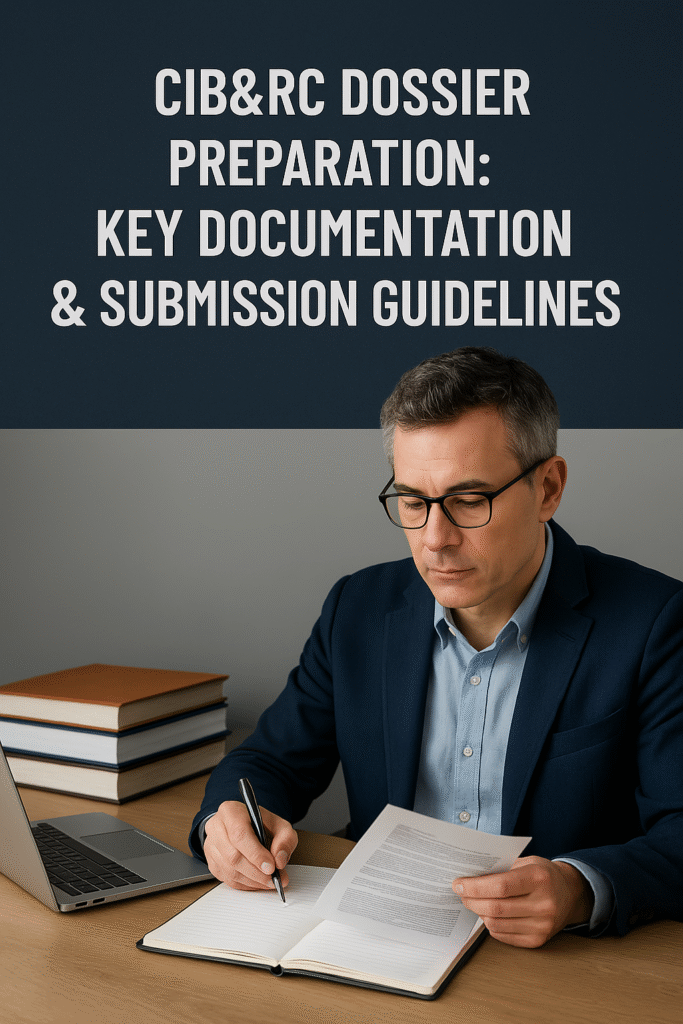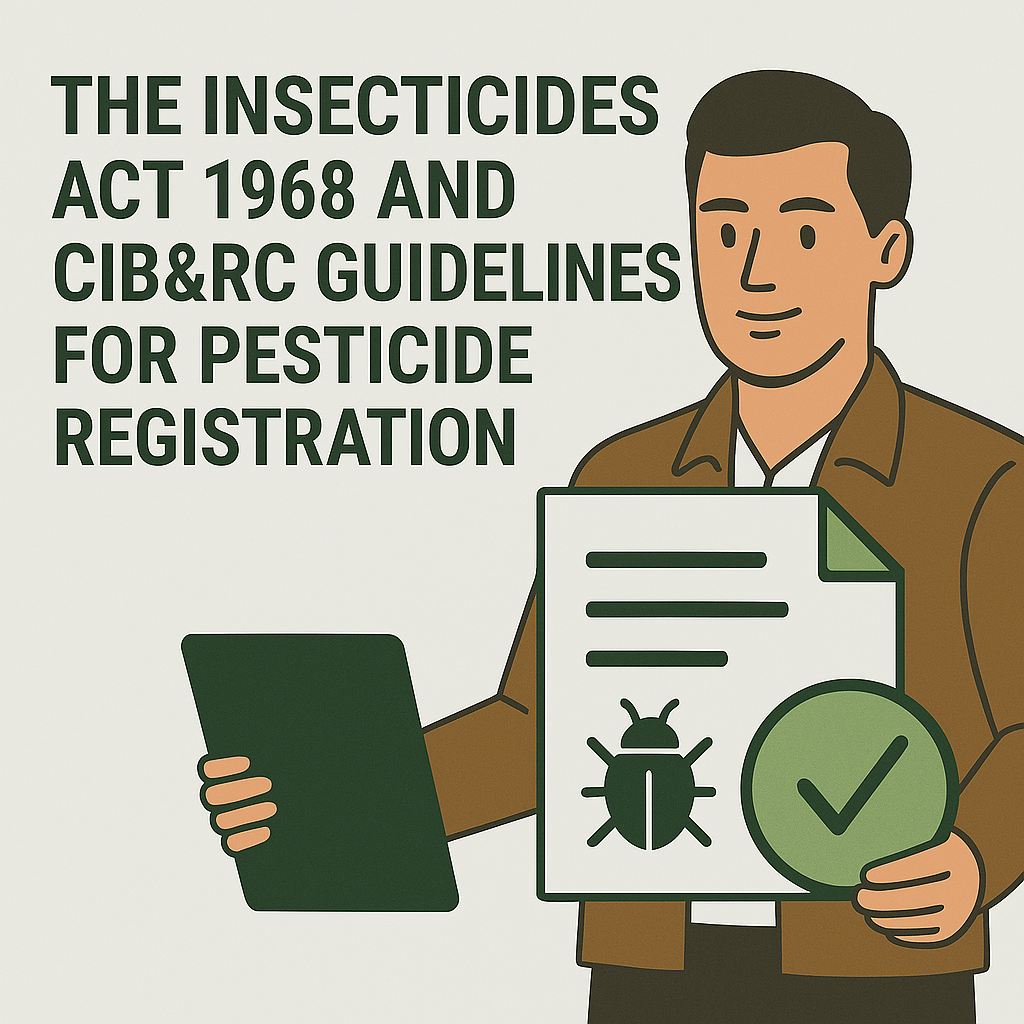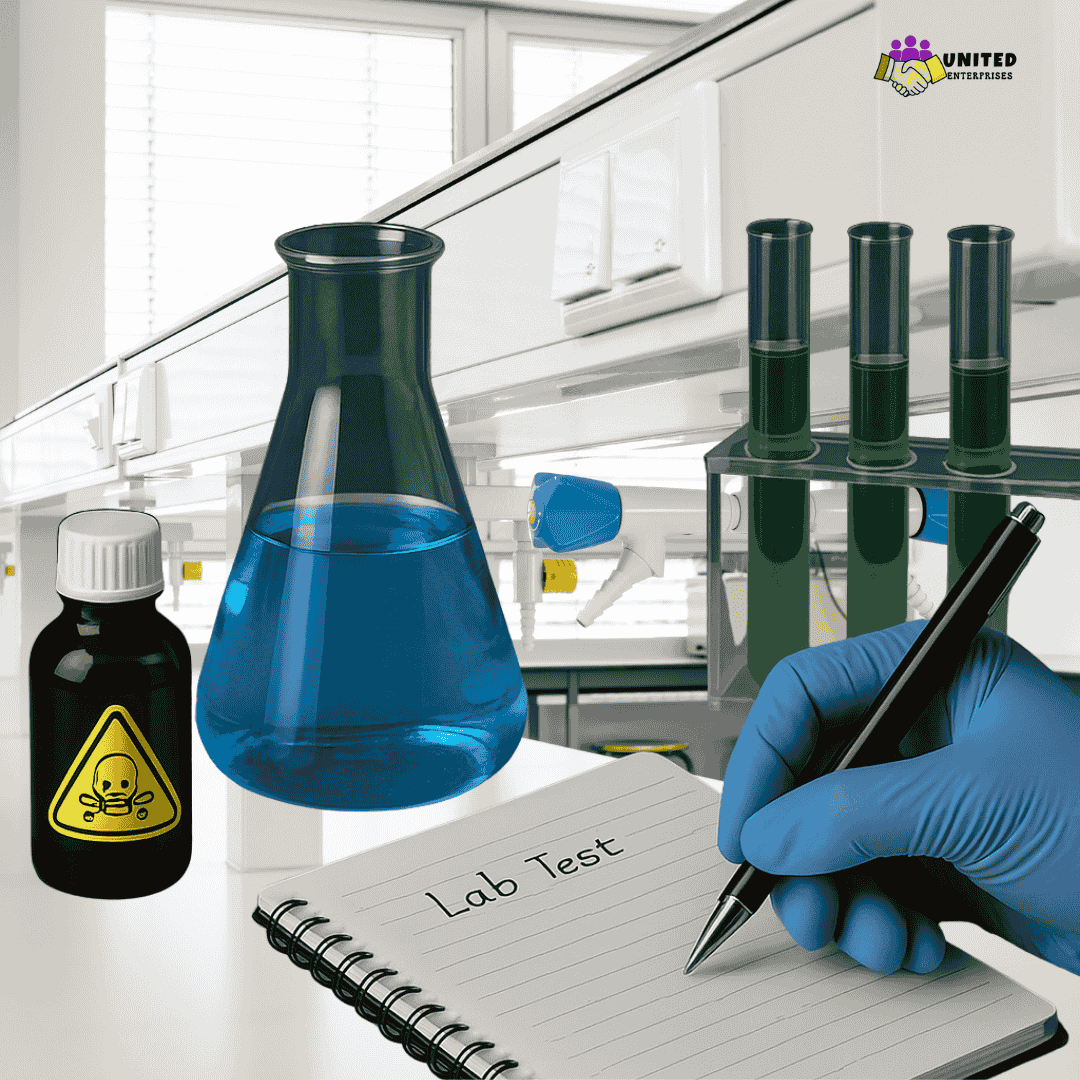CIB&RC Registration in India—Apply for Pesticide & Agrochemical Product Approval
CIB&RC Dossier Preparation: Key Documentation & Submission Guidelines
One of the most imperative steps in registering pesticides under CIB&RC is the preparation of a full, well-fulfilled CIB&RC dossier. The dossier should be in the structure and content of the Central Insecticides Board and Registration Committee requirements and such scientific and technical information should be correct, verifiable and up-to-date.
The important documents are:
- Data in Chemistry: Specifications, analysis techniques and shelf-life investigations
- Toxicology Reports: Acute, chronic and environmental toxicity data of GLP laboratories
- Residue Data: Residue trials in the field to be in compliance with MRL
- Bio-efficacy Reports: Evidence regarding efficiency against target diseases or pests
- Product Labels & Leaflets: Product labeling and leaflets as per labeling guidelines under the Insecticides Rules
- Manufacturing Information: Technology supply origin, formulation make-up and batch information
- Declaration & Affidavits: Documents that support the authenticity of submission in the law

Understanding CIB&RC Registration in India
CIB&RC registration in India refers to the mandatory process governed by the Central Insecticides Board and Registration Committee (CIB&RC), which regulates the import, manufacture, sale and use of pesticides and agrochemical products under the Insecticides Act, 1968.
All pesticides or agrochemical products have to be registered under CIB&RC in order to market them in India and then they have to be safe for human health, efficacy and environment-related issues.
Registration entails the submission of an elaborate technical dossier, product file, toxicity, residue and efficacy data. No matter what type of pesticide it is (technical-grade, formulated or bio-pesticide), CIB&RC treats applications thoroughly. This is to make sure that the products sanctioned are safe as well as effective for the users, crops and the environment.
Adherence to CIB&RC pesticide application registration requirements plays an important role in the action of agrochemical companies willing to introduce or extend their portfolio in the India agricultural market.
Overview of the Insecticides Act 1968 and CIB&RC Guidelines for Pesticide Registration
The Insecticides Act 1968 is the earliest act also leading to the regulation of pesticides in India. Its intended focus is the provision of safe and effective insecticides without posing any risk to the humans, animals and the environment.
Under this Act, the Central Insecticides Board and Registration Committee (CIB&RC) is empowered to evaluate and register pesticide products based on strict scientific data and testing protocols. The data, procedure, and norms pertaining to labeling and safety to approve the product are provided along with the CIB&RC policies on pesticide registration.
These regulations put in place limits on technical pesticides, formulations, bio-pesticides and imported agrochemical products, which have aided in preserving quality and safety in the entire agrochemical sector of India.

How to Apply for Central Insecticides Board Registration in India
In India, the process of CIB&RC registration follows a systematic procedure under the Insecticides Act, 1968. The first step is identifying the appropriate registration type—9(3), 9(4), or 9(3B)—based on the product’s novelty.
The applicant will then be expected to submit an in-depth CIB&RC dossier, which will consist of lab reports certified with GLP in terms of chemistry, toxicology and residue studies. The same is being done online through the official CIB&RC portal along with the required application fee.
Once submitted the documents are reviewed by the Central Insecticides Board and Registration Committee to which may pose some clarifying questions about the product, as well as judgethe efficacy and safety of the product.
It issues a registration certificate in case of its approval and consequently the product can be manufactured, imported or sold in India legally. Proper following of the CIB&RC application process guarantees the successful and on-time registration of its product.
Types of Pesticide Registrations Under CIB&RC: 9(3), 9(4), and 9(3B) Explained

The Central Insecticides Board and Registration Committee (CIB&RC) provides three main types of pesticide registrations under the Insecticides Act, 1968—9(3), 9(4), and 9(3B)—based on the nature and novelty of the product.
9(3) registration is granted for new, innovative pesticide molecules or formulations not previously registered in India. It requires comprehensive data including efficacy trials, GLP toxicology, residue analysis, and environmental impact studies. 9(4) registration is meant for “me-too” products, which are identical to already approved formulations; it requires significantly less data and is comparatively faster.
9(3B) registration is provisional and granted for a limited period—usually for urgent needs or field trials—pending submission of full data.
The knowledge of the difference between these types of registration can play a key role in the effectiveness of the agrochemical companies who seek to get their agrochemical product approved and in compliance with the regulation within the Indian market as soon as possible.
Chemistry, Toxicology & Lab Test Data for CIB&RC Registration
To achieve successful CIB&RC registration of their pesticide or agrochemical product in India, the applicant should provide detailed scientific information that should establish the safety and efficacy of the product. This includes:
- Chemistry Data
In-depth description of product composition, active components, impurities and shelf life
Has specifications on formulated products and technical-grade products
Comprehensive description of the product’s composition, including active ingredients, inert components, impurities, and shelf life.
Specifications for both technical-grade and formulated products.
Certificates of analysis (CoA) for each batch tested.
Details of manufacturing processes and quality control measures.

- Toxicology Data
Investigations of acute, sub-chronic and chronic toxicity Contains reports on the effects to people, animals and the environment GLP-certified reports Covers carcinogenicity, mutagenicity and reproductive toxicity
-
Results of acute, sub-chronic, and chronic toxicity studies on mammals.
-
Data on carcinogenicity, mutagenicity, and reproductive toxicity.
-
Safety assessment reports for humans, animals, and the environment.
-
All studies must be conducted in GLP-certified laboratories.
- Lab Test Data
Involves bio-efficacy studies, residue results and environmental studies Have to be performed in GLP-approved laboratories and adhered to the CIB&RC dossier checklist procedures Validated test data, which is of high quality, will guarantee the product fulfills all regulatory requirements, and this will hasten the pesticide registration process under the CIB&RC.
-
Bio-efficacy studies proving product effectiveness against target pests.
-
Residue analysis to determine safe pre-harvest intervals (PHI).
-
Environmental impact studies covering soil, water, and non-target organisms.
-
All tests must follow CIB&RC dossier checklist procedures and be conducted in GLP-approved facilities.
Agrochemical Product Registration: Herbicides, Insecticides & Fungicides
Agrochemical products such as herbicides, insecticides, and fungicides must undergo mandatory registration with the Central Insecticides Board and Registration Committee (CIB&RC) before being sold or distributed in India. This makes the products safe, effective and also in line with regulatory rules as provided in the Insecticides Act, 1968.
Every kind of product has particular information and tests necessary data which include toxicity and residue/efficacy reports. The proper application route has to be adhered to depending on whether the product is technical-grade or formulated and the documentation has to be provided in detail.
You have to introduce your fungicide license, herbicide approvals and insecticide registrations in the market and a legitimate CIB&RC process will help you do the right thing.
CIB&RC Application Process for Agrochemical Product Approval
- The CIB&RC application process begins by identifying the correct registration type (9(3), 9(4), or 9(3B)), followed by preparing a detailed dossier that includes GLP lab reports, product labels and manufacturing details.
- The online portal of the CIB&RC allows submitting the application, which is then checked by the professionals and confirmed in case all the requirements of the compliance standard are fulfilled.
Bio-Pesticide Registration Under CIB&RC: Process and Compliance
- In CIB&RC, scientific data containing the evidence of the microbial or botanical origin of the bio-pesticide together with safety-related data, efficacy testing data and data on production methods are prerequisites to be considered in the registration of bio-pesticide.
- The registration procedure is a bit diverse compared to chemical pesticides and emphasizes ecological safety and biological efficacy.
End-Use vs. Technical-Grade Pesticide Registration in India
Feature | Technical-Grade Registration | End-Use Registration |
Definition | Registration of the active ingredient in pure form | Registration of the final formulated product |
Purpose | For manufacturing or importing technical-grade pesticide | For marketing or selling ready-to-use formulations |
Data Requirements | Requires full GLP data: toxicology, residue, chemistry | Requires efficacy data, product composition, and stability |
Testing Needs | Comprehensive: includes toxicological and environmental studies | Focused on bio-efficacy and formulation compatibility |
Cost & Time | Higher cost, longer duration due to extensive data needs | Lower cost, quicker approval if based on approved technical |
Examples | Pure Glyphosate, Imidacloprid technical | Glyphosate 41% SL, Imidacloprid 17.8% SL |
Regulatory Requirement | Mandatory for introducing a new active ingredient | Required for selling commercial pesticide products |
CIB&RC Dossier Preparation: Key Documentation & Submission Guidelines
One of the most imperative steps in registering pesticides under CIB&RC is the preparation of a full, well-fulfilled CIB&RC dossier. The dossier should be in the structure and content of the Central Insecticides Board and Registration Committee requirements and such scientific and technical information should be correct, verifiable and up-to-date.
The important documents are:
- Data in Chemistry: Specifications, analysis techniques and shelf-life investigations
- Toxicology Reports: Acute, chronic and environmental toxicity data of GLP laboratories
- Residue Data: Residue trials in the field to be in compliance with MRL
- Bio-efficacy Reports: Evidence regarding efficiency against target diseases or pests
- Product Labels & Leaflets: Product labeling and leaflets as per labeling guidelines under the Insecticides Rules
- Manufacturing Information: Technology supply origin, formulation make-up and batch information
- Declaration & Affidavits: Documents that support the authenticity of submission in the law

CIB&RC New Product Registration: Key Steps for Approval
New pesticide and agrochemical products and their registration under CIB&RC follow a complex and systematic framework to define the safety, effectiveness and regulations of such products. This is typically done under the 9(3) registration category, which applies to new technical or formulation products that have not been previously registered in India.
The important steps are the following:
- Identify the Registration Type: Confirm if the product qualifies as a new molecule or formulation under 9(3).
- Dossier: A CIB&RC dossier (characters that can be included according to GLP-certified toxicology, chemistry, residue, and bio-efficacy); Complete.
- Pre-submission Meeting (Optional): Engage with CIB&RC for guidance and clarification on study protocols.
- Online application: Fill out the application through the official CIB&RC portal, along with the required papers, forms, and specified fees.
- Revision & Clarifications: Quickly respond to any request of queries or gaps by the assessment panel.
- Expert Review: A product is subjected to assessment by technical experts under the Central Insecticides Board and Registration Committee.
- Approval and Certification: After successful evaluation, the certification is then done and a registration certificate is issued to conduct legal manufacturing or marketing of the product.
Observing such steps minimizes possible frictions in the process of CIB&RC registration in India and makes the process easier, providing timely market entry of new products in the agrochemical sector.
CIB&RC Agrochemical Export License Requirements
To legally export agrochemical products from India, companies must obtain an export license or NOC (No Objection Certificate) from the Central Insecticides Board and Registration Committee (CIB&RC) under the provisions of the Insecticides Act, 1968. Although domestic registration is not required on export-only products, the product must nevertheless be registered with CIB&RC, and the exporter must undergo rigorous documentation and compliance practice.
The candidate will be asked to make an online submission to the official CIB&RC portal, and the necessary documents will include the specifications of the product, its chemical composition, safety data certified within the GLP, and a statement of the intention to export.
The exporter also has to submit evidence of an effective insecticide manufacturing license granted by the State Licensing Authority. In case the product already gets approval or registration in the country of importation supporting documentation such as a registration certificate or allowance to import in the country may be required.
CIB&RC also safeguards products sold abroad in terms of quality and safety which are in line with the international standards. When it is successfully verified, the committee provides an export NOC or certificate, and this NOC establishes the right of the applicant to be allowed to export the concerned agrochemical formulation. This would help in the regulation of agrochemical trade exports in India- which should be natural, transparent and globally friendly.
Frequently Asked Questions
CIB&RC registration is mandatory approval to manufacture, import, or sell pesticides in India under the Insecticides Act, 1968.
Submit an online application with technical documents and test data via the CIB&RC portal for review and approval.
9(3) is for new pesticide products with complete data, while 9(4) is for me-too (already approved) products.
Dossier, GLP lab reports, chemistry and toxicology data, manufacturing details, and product labels are required.
Approval typically takes 12–24 months, depending on the registration type and data completeness.
Fees vary by registration type and range from ₹5,000 to over ₹1,00,000, plus testing and consultancy costs.
Fees vary by registration type and range from ₹5,000 to over ₹1,00,000, plus testing and consultancy costs.
Yes, GLP-certified data is mandatory for technical-grade pesticide registration under CIB&RC.
Yes, bio-pesticides can be registered under a specific process outlined by CIB&RC guidelines.
Selling unregistered pesticides is illegal and may result in fines, license cancellation, or imprisonment.
You can track your application status through the official CIB&RC online registration portal.


